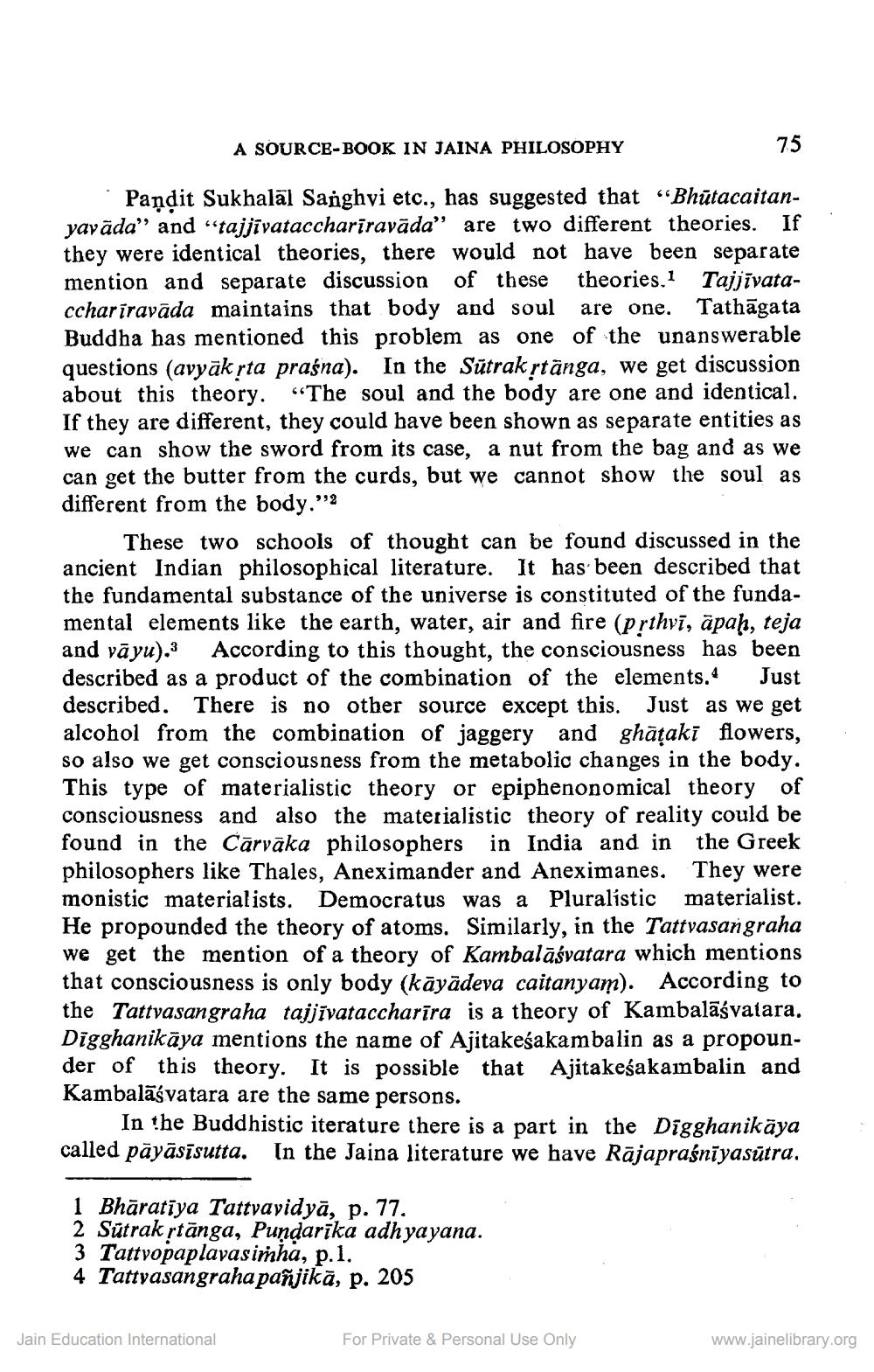________________
A SOURCE-BOOK IN JAINA PHILOSOPHY
Pandit Sukhalal Sanghvi etc., has suggested that "Bhutacaitanyavada" and "tajjīvatacchariravada" are two different theories. If they were identical theories, there would not have been separate mention and separate discussion of these theories.1 Tajjīvatacchariravāda maintains that body and soul are one. Tathāgata Buddha has mentioned this problem as one of the unanswerable questions (avyāk ṛta praśna). In the Sutrakṛtänga, we get discussion about this theory. "The soul and the body are one and identical. If they are different, they could have been shown as separate entities as we can show the sword from its case, a nut from the bag and as we can get the butter from the curds, but we cannot show the soul as different from the body."""
These two schools of thought can be found discussed in the ancient Indian philosophical literature. It has been described that the fundamental substance of the universe is constituted of the fundamental elements like the earth, water, air and fire (prṛthvī, apaḥ, teja and vāyu).3 According to this thought, the consciousness has been described as a product of the combination of the elements.4 Just described. There is no other source except this. Just as we get alcohol from the combination of jaggery and ghataki flowers, so also we get consciousness from the metabolic changes in the body. This type of materialistic theory or epiphenonomical theory of consciousness and also the materialistic theory of reality could be found in the Cārvāka philosophers in India and in the Greek philosophers like Thales, Aneximander and Aneximanes. They were monistic materialists. Democratus was a Pluralistic materialist. He propounded the theory of atoms. Similarly, in the Tattvasangraha we get the mention of a theory of Kambalāśvatara which mentions that consciousness is only body (kāyādeva caitanyam). According to the Tattvasangraha tajjīvataccharira is a theory of Kambalāśvatara. Digghanikaya mentions the name of Ajitakeśakambalin as a propounder of this theory. It is possible that Ajitakeśakambalin and Kambalāśvatara are the same persons.
75
In the Buddhistic iterature there is a part in the Digghanikāya called pāyāsīsutta. In the Jaina literature we have Rajapraśnīyasūtra.
1 Bharatiya Tattvavidya, p. 77.
2 Sütrak ṛtänga, Pundarika adhyayana.
3 Tattvopaplavasimha, p.1.
4 Tattvasangrahapañjikā, p. 205
Jain Education International
For Private & Personal Use Only
www.jainelibrary.org




